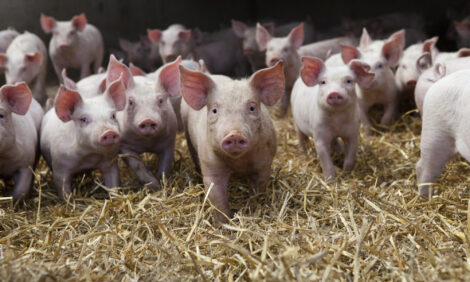



Manure Treatment from Open Feedlots: Alternative Technologies
By Jeff Lorimor and Brad Woerner, Agricultural Engineers, Department of Agricultural and Biosystems Engineering, ISU - This article discusses a review of current literature to determine what level of contaminant reduction could be achieved by a series of alternative manure treatment technologies. |
A review of current literature was conducted to determine what level of contaminant reduction could be achieved by a series of alternative technologies. The first step in any control system should be solids settling. Research has shown settling basins below swine lots retained an average of 46% of the solids, 31% of the total Kjeldahl nitrogen (TKN), and 31% of total phosphorus (P). Settling below earthen beef feedlots removed 64% of the solids from the raw runoff, 84% of the TKN, 80% of the P and 34% of potassium (K).
Vegetative filter strips provide an opportunity for runoff and pollutants to infiltrate into the soil profile; and allow deposition of suspended solids. Solids concentrations were shown to be reduced by up to 98%, with most reductions in the 70-90% range. TKN removal averaged 71.5%, and P removal averaged 68.7%. Critical design factors are length and/or the ratio of the vegetated area to the feedlot runoff area.
Constructed wetlands are another alternative technology that has been researched extensively. Although different studies show different results, in general the wetlands should be expected to provide 50% or more reduction of TKN, P, and solids, and 60% or greater reductions of BOD.
Finally, soil infiltration areas are very effective mitigators of pollutants. Two recent infiltration studies at Iowa State University have shown excellent water quality improvements. Using liquid swine manure, Prantner et al. (2001) showed over 93% reductions in NH4-N, and 89% reduction in P. Yang & Lorimor (2000) found an 81% reduction in suspended solids, 83% reduction in TKN, an 85% reduction in NH4-N, a 78% reduction in P.
By piggybacking various combinations of the technologies, reductions of over 90% could be attainable. It should be noted that while these technologies have proved to provide effective reductions in nutrient concentrations, they are not practices that are currently allowed in the State of Iowa.








